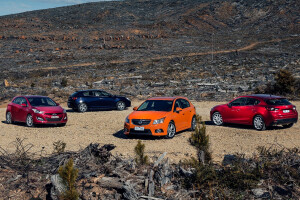Latest Review

2015-2016 Holden Cruze Range Review
The Holden Cruze is comfortable and well equipped, and has more room in the back than most small cars. It is Holden’s alternative to the popular Toyota Corolla and Mazda3.
What stands out?
The Holden Cruze is comfortable and very well equipped for the money, and allows rear-seat passengers more space than most small cars. There are Cruze sedans, hatches and wagons. The Cruze was Holden’s alternative to the popular Toyota Corolla and Mazda3. For 2017, the Cruze was replaced by the Holden Astra.
What might bug me?
Engines use more fuel than the most efficient small car engines.
You might wish for more feel from the steering, and there is no left footrest for the driver.
In a Cruze sedan or hatchback, driving at 80km/h on the optional space saver spare until you can replace your full-sized flat tyre. Or if you have not optioned the spare, getting to grips with the tyre repair kit.
What body styles are there?
Four-door sedan, five-door hatchback, and five-door wagon.
All are front-wheel drive. The Holden Cruze is classed as a small car, lower priced.
What features does every Holden Cruze have?
Cruise control, rear parking sensors, heated external mirrors, and headlamps that switch on automatically when it gets dark. Height and reach adjustment for the steering wheel.
Bluetooth connectivity, a 7.0-inch colour touchscreen, and Holden’s MyLink infotainment system, which has Siri voice control operation and access to music apps such as Pandora and Stitcher.
Electronic stability control, which can help the driver recover the car from a skid. All new cars must have this feature.
Six airbags: two directly in front of the driver and passenger, a side airbag for each front occupant to protect the upper body, and curtain airbags protecting the heads of front and rear passengers from side impacts.
All Cruze models come with aluminium alloy wheels, which are lighter and look nicer than the steel wheels often on base models near this price.
All Holden Cruzes are warrantied for three years or up to 100,000km.
Which engine uses least fuel, and why wouldn't I choose it?
The 1.8 litre petrol is the more fuel efficient of the two engines you can get in a Cruze, and it is the only option for the least expensive Equipe versions and each of the wagons. Unfortunately it needs plenty of encouragement to get along well, and can be noisy when revved hard.
In official tests it uses 7.0 litres/100km for manual gearbox versions and 7.4 litres/100km for the autos (city and country combined).
The 1.6-litre turbo engine fitted to Cruze SRi-Z sedans and hatches is more convincing, offering about 30 per cent more urge in most conditions and making less work of it.
The downside is that it calls for premium unleaded petrol. But while it does use more fuel than the non-turbo 1.8, there is not a lot in it.
The manual gearbox available on sedans and hatches with the 1.8 engine is a five-speeder. Manual SRi models get a six-speeder. All Cruze automatics, including those in both wagons, are six-speeders.
What key features do I get if I spend more?
Step past the Cruze Equipe sedan or hatch and spend more on a Cruze Z-Series sedan or hatch and you get a reversing camera, satellite navigation, seats trimmed partly in leather, and a leather-wrapped steering wheel. There are also several cosmetic changes, among them different wheels (but still 17-inch diameter alloys), spoilers at the rear of the body, and badged floor mats.
Spend more again on a Cruze SRi-Z and you get the more powerful, 1.6-litre turbo engine, leather trim, heated front seats, and smart-key entry (you can leave your keys in your pocket or bag when unlocking the doors). Wheel size grows to 18 inches, and the tyres are wider and lower in profile (which enhances steering response marginally and looks sportier).
The wagons are offered only with the 1.8 litre engine and automatic transmission. The CD has smaller – 16-inches – and narrower alloy wheels than the sedans and hatches, while the CDX rolls on the 17s. Each wagon offers the option of a full-sized spare (other Cruzes rely on a space-saver spare, at best).
CD wagon features are otherwise similar to those on the Equipe sedans and hatches, while the CDX wagon compares with the SRi-Z, but with rain-sensing windscreen wipers and without the Z models’ sport-themed cosmetic touches.
Does any upgrade have a down side?
The wider, lower profile tyres fitted to the 18-inch wheels ride less smoothly and may cost more to replace than those on the 17s and 16s.
The standard colours are white and red. All others cost extra.
How comfortable is the Holden Cruze?
The interior of the Cruze is a mixed bag. Commodore drivers will notice some familiarity in the look and feel of some switches and dials. But it lacks the overall elegance of the Commodore.
The main controls are generally well laid out, although the abundance of silver-look plastics can feel overdone. Similarly, the blue-lit instruments and touches of chrome are starting to date.
A disappointment up front is the absence of a driver’s footrest, a move taken on right-hand drive models to improve crash safety.
Storage levels are good, with a small binnacle near the driver’s right knee and another handy, covered pod on top of the dash.
The Cruze is slanted more towards comfort than sportiness, and is quiet and refined at speed.
What about safety in a Cruze?
Stability control and six airbags kick off a solid safety package, and auto headlights are a win.
The addition of a reversing camera lifts the safety credentials of Z-model Cruzes and the CDX wagon.
(To see a list of the safety features on any model, open the model from the Cars Covered By This Review dropdown near the top of this page, and look under the features tab. Safety-related features are listed in red.)
No Cruze offers active safety features such as automatic emergency braking.
The Australasian New Car Assessment Program (ANCAP) has given the Cruze its top mark for safety: five stars.
I like driving - will I enjoy this car?
The six-speed automatic gearbox fitted to all auto Cruzes is nicely tuned, but that can’t mask the underwhelming way the 1.8-litre engine in most goes about its business.
The 1.6-litre turbo adds some zing to the more expensive Cruze SRi-Z and makes for much easier acceleration and cruising.
Steering from a Cruze feels a little lifeless, and that detracts from otherwise acceptable manners. The SRi-Z lifts the game again however, with firmer suspension that improves steering accuracy. Its ride on 18-inch wheels trades some comfort for a more engaging drive, albeit one that doesn’t match the best-steering small cars such as the Volkswagen Golf and Ford Focus.
How is life in the rear seats?
The Cruze brings more leg room for rear-seat passengers than most small car rivals. Knee room, in particular is generous.
There are no rear air-conditioning vents, however.
How is it for carrying stuff?
The wagon is the most cavernous, with 686 litres of luggage room. The sedan gets a still decent 445 litres, while the hatch is slightly less at 413 litres.
Split-fold seats (60/40) help those looking to trade people space for cargo space.
Where does Holden make the Cruze?
The sedans and hatchbacks are made in Australia, and the wagons in South Korea.
What might I miss that similar cars have?
The Cruze does not offer active driver aids such as automatic emergency braking, which are available on the Mazda3 and Volkswagen Golf, for example.
Other alternatives include the Toyota Corolla, Hyundai i30/Elantra, Ford Focus, Subaru Impreza and Honda Civic.
I like this car, but I can't choose which version. Can you help?
SRi-Z hatch or sedan. The 1.6 turbo engine is a big step up, and these look sportier inside and out. It’s a better drive, and worth paying for.
When did Holden last update the Cruze?
The Cruze range received a minor revision early in 2015. About February 2016 the arrival of the Z-models brought mainly cosmetic changes, and the less well equipped of the turbocharged SRis was dropped from the range.
Holden began to make the Cruze in Australia in 2011, building 126,255 sedans and hatches before production ceased on 7 October 2016. The Cruze was replaced for the 2017 model year by a new-generation imported small car, the Holden Astra.
Score breakdown
Things we like
- Roomy in the back
- Lots of equipment
- Wagon available
Not so much
- Lethargic base engine
- Dated interior
- Fuel use
News
-
 Advice
AdviceShould I buy a discontinued Holden?
As Australia farewells Holden, we take a look into discontinued cars and whether they’re worth the money
-
 News
NewsGM’s income slashed after European withdrawal
The cost of cutting free Opel – GM’s international division that will make the next Holden Commodore – and halting Aussie Cruze production has hurt the company
-
 News
NewsHow Holden announced its last day of manufacturing
A three-page statement sent to media has announced the final day of manufacturing
-
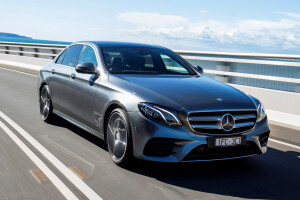 News
NewsGerman vehicles outsell Australian cars in 2016
Locally made cars were outsold by German built vehicles in Australia last year
-
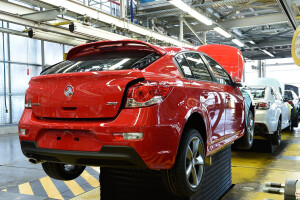
Holden Cruze production ends in South Australia
-
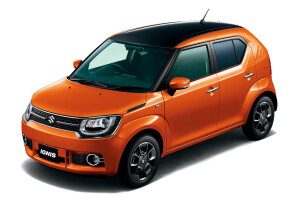
Suzuki Ignis confirmed for Australian return
-
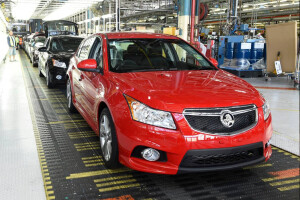
Holden confirms Cruze production shut-down date
-

Holden posts $128m profit for 2015


